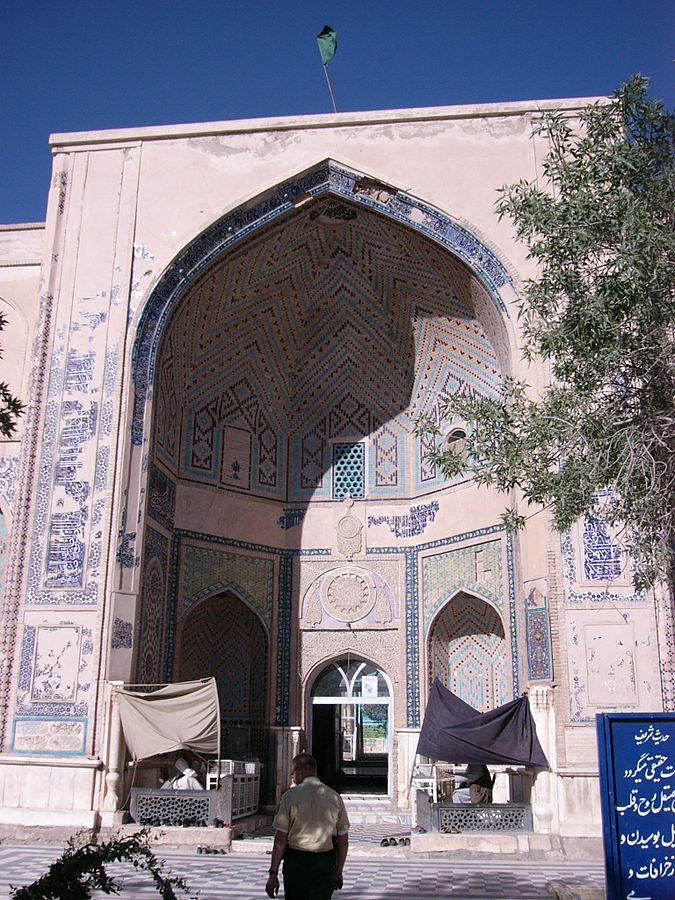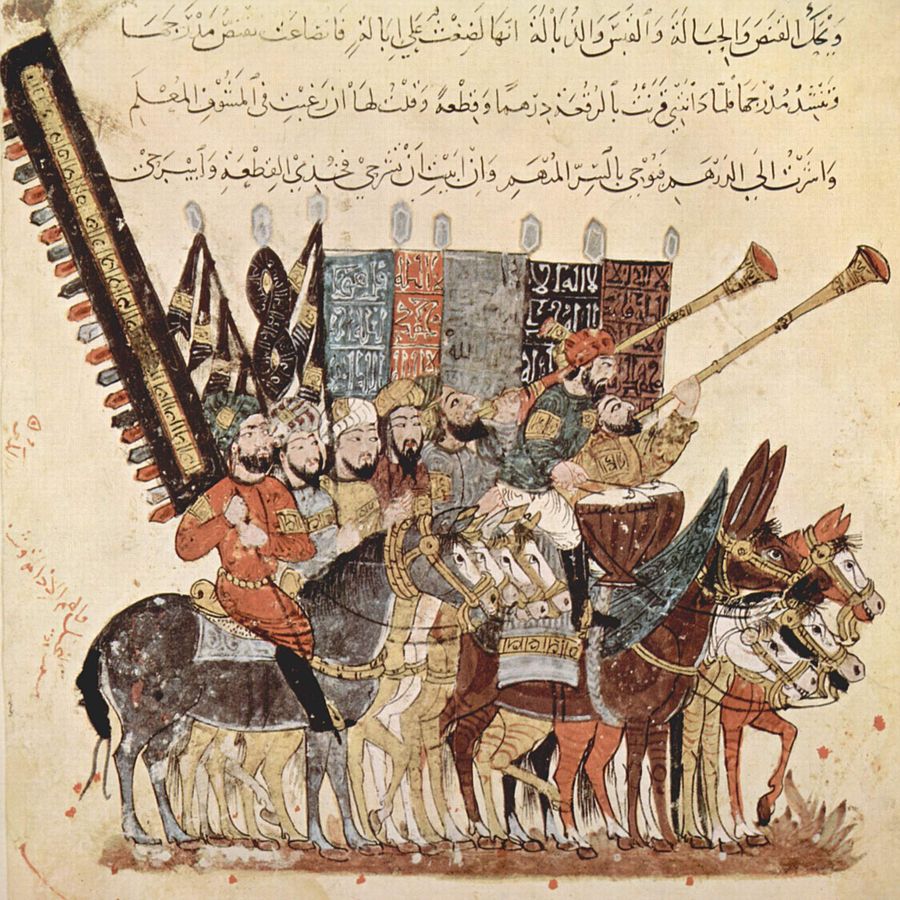The Islamic world has created many of the knowledge and inventions we see nowadays, such as coffee, algebra, and possibly the paper mill. Islamic art and architecture has also been highly influential throughout the world. The students of Boston University instructor Dr. Emine Fetvaci’s Islamic Art and Architecture class reviewed content in this topic area, paying attention to particular artworks, as well as trying to understand the patrons, artists, architects, and audiences of the works. Below are some of the articles they created and expanded.

Image by Sven Dirks, CC BY-SA 4.0, via Wikimedia Commons.
The Shrine of Khwaja Abd Allah, commonly called the Shrine at Gazur Gah and the Abdullah Ansari Shrine Complex, is the funerary compound of the Sufi saint Khwaja Abdullah Ansari. It was built by architect Qavam al-Din of Shiraz in 1425, in Herat, Afghanistan and the patron of this monument is Shah Rukh, ruler of the Timurid dynasty. He commissioned the site as a memorial mausoleum for patron-saint Khwaja Abdullah Ansari, a Sufi mystic. Much of the focus of the complex is given to the east iwan, a rectangular interior space with one un-walled side. The facade consists of three entrances from the large polygonal bay, covered in intricate mosaics. Despite the grandeur of the ornamentation, the iwan walls are rough. This is likely due to the rushed nature of construction, which only took around three years despite the fact that decoration itself is usually completed in the same length of time. Historians believe this suggests that Qavam al-Din designed the ornamentation himself, which was then executed by a team of mosaicists.
Another example of Islamic architecture is the Al-Firdaws Madrasa, a 13th-century complex located southwest of Bab al-Maqam in Aleppo, Syria. It was established in 1235/36 by Dayfa Khatun, who would later serve as the Ayyubid regent of Aleppo, and consists of a madrasa, mausoleum, and other functional spaces. The complex is the largest and best known of the Ayyubid madrasas in Aleppo and due to its location outside the city walls, the madrasa was developed as a freestanding structure. This central location is believed by historians to have been chosen in order to demonstrate the power and wealth of the ruler of Aleppo to any passerby and because the site’s strong religious ties would have earned continuous words of prayer from passersby.

Image by al-Wâsitî, Yahyâ ibn Mahmûd, public domain via Wikimedia Commons.
Other articles created and expanded by these students includes the one on Maqama, a literary genre which alternates the Arabic rhymed prose known as Saj‘ with intervals of poetry in which rhetorical extravagance is conspicuous. Originally in Arabic prosimetric, there are only eleven illustrated versions of the Maqāmāt from the thirteenth and fourteenth centuries that survive to this day. These Maqāmāt manuscripts were likely created and illustrated for the specialized book markets in cities such as Baghdad, Cairo, and Damascus, rather than for any particular patron. Elite and educated classes were the audience for these manuscripts, as the Maqāmāt was largely appreciated and valued for its nuanced poetry and language choice, rather than its manuscript illustrations.
Are you interested in incorporating a Wikipedia writing assignment into a future course? Visit teach.wikiedu.org to find out how you can gain access to our free tools, online trainings, and printed materials.
